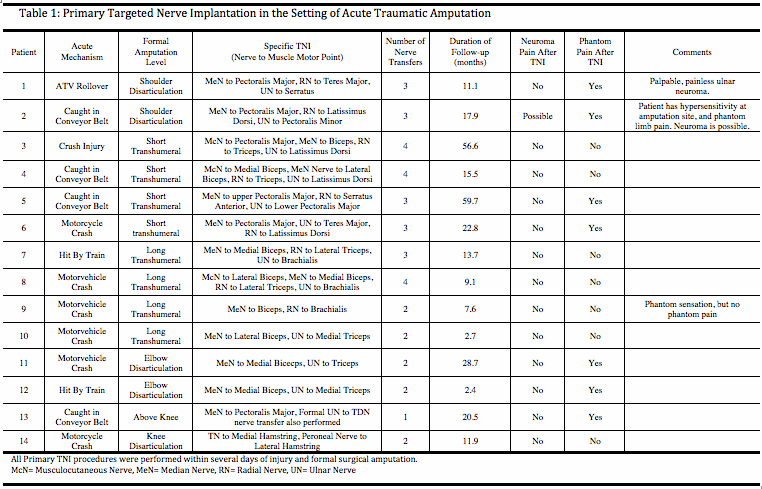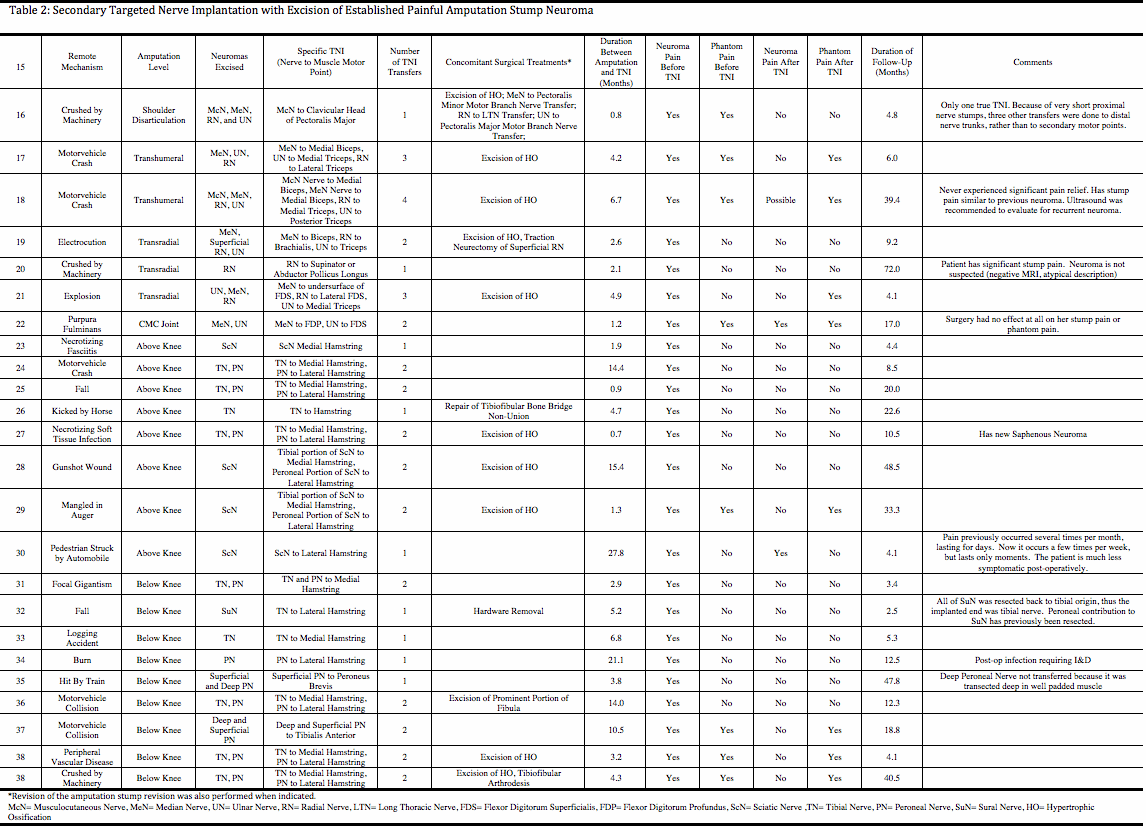Back to 2014 Annual Meeting Program
Targeted Nerve Implantation for Primary Prevention and Secondary Treatment of Neuromas in Amputees
Mitchell Pet, MD, Janna Friedly, MD, Douglas Smith, MD and Jason Ko, MD
University of Washington, Harborview Medical Center, Seattle, WA
Background: Painful neuromas affect up to 25% of amputees, because axons sprouting from the proximal nerve stump are deprived of a distal target to reinnervate. This leads to a directionless and disorganized proliferation of neural and connective tissue. To address neuroma formation in this setting, we performed a surgical technique called Targeted Nerve Implantation (TNI), wherein the proximal amputated nerve stump is implanted onto a surgically denervated portion of nearby muscle at a secondary motor point, thereby providing regenerating axons with a distal target for organized reinnervation. We hypothesized that rather than forming a neuroma, sprouting axons enter the secondary motor point and arborize into the denervated muscle. In this study, we determined whether TNI was an effective strategy for primary prevention of neuroma in the setting of acute amputation and for secondary treatment of established neuromas in upper and lower extremity amputees. Materials and Methods: We retrospectively reviewed two groups of patients treated by a single surgeon at a high-volume trauma center between 2006 and 2012: 1) 14 patients who underwent primary TNI for neuroma prevention at the time of acute amputation; and 2) 24 patients with established neuromas who underwent neuroma excision with secondary TNI. The primary outcome examined was presence or absence of neuroma pain at the last post-operative follow-up visit. Results: Thirty-eight amputees underwent TNI for either primary neuroma prevention or secondary neuroma treatment. In the primary TNI group, 12 out of 14 patients were male, and 12 out of 14 were upper extremity amputees. In the secondary TNI group, 16 out of 24 patients were male, and 7 out of 24 were upper extremity amputees. After primary TNI in the setting of acute amputation, 13 of 14 (93%) patients were free of neuroma pain at a mean follow-up of 20 months. After secondary TNI for the treatment of established neuroma, 21 of 24 (88%) patients were free of neuroma pain after a mean follow-up of 19 months. Conclusions: Targeted nerve implantation was effective for neuroma prevention when performed primarily at the time of acute amputation and for the treatment of established painful end-neuromas when performed secondarily. By providing a distal target for proximal axon sprouts to grow into, TNI may offer an effective strategy for the prevention and treatment of neuromas in upper and lower extremity amputees. However, additional research is necessary to confirm the proposed mechanism and to compare TNI to existing techniques. 


Back to 2014 Annual Meeting Program
